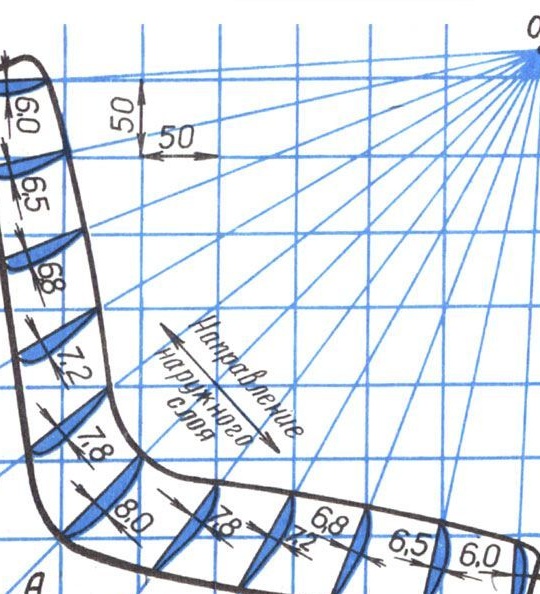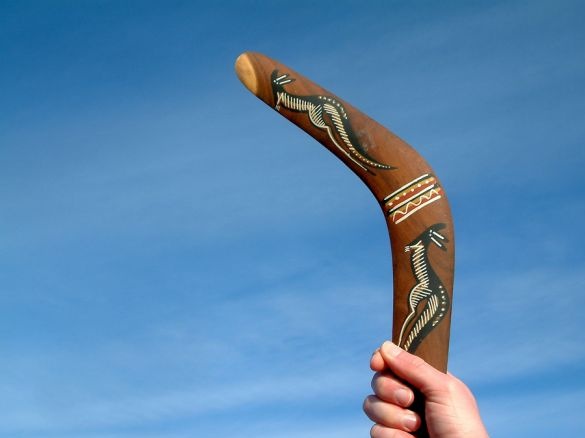Boomerang is one of the most non-standard weapons. It was used to hunt and defeat unlucky opponents in ancient Egypt, India, Africa, Indonesia, etc. A boomerang is not difficult to make, but in case of a miss, it returns to the owner. The shock power of a combat boomerang is such that, if it hits your head, your opponent will be fatal, falling into other parts of the body will lead to serious fractures and injuries. Therefore, caution is above all, there is a danger of entering the Guinness Book of Records, like a moron who took his head with a boomerang ...
In principle, for making boomerangs is all you need - This is a set of labor from school and a piece of plywood:
1. Jigsaw
2. Sandpaper
3. Plywood 10 mm thick
4. A sheet of paper, pencil and scissors
Procedure:
Step one. We draw a sketch of the future boomerang. Take a piece of thick paper, preferably cardboard, and apply a grid with a square side equal to 50 mm. Be careful, the aerodynamics of your boomerang depend on how correctly you prepare your sketch. Make sure that the sides of the boomerang are symmetrical.

Step Two Cut your workpiece with scissors and transfer it to plywood.
Step Three Now, as you already guessed, you need to carefully cut the future boomerang along the contour.
Step Four The finale and, probably, one of the most difficult and painful steps, if you have nothing to sand other than sandpaper. The surface of the boomerang should be perfectly smooth, so polish it with sandpaper. During polishing, the boomerang thickness decreases by approximately 2 mm.
You can look at the second, third and fourth steps for clarity in this picture:

In the end, if you have the opportunity, you can paint the boomerang with varnish. Then it will last longer, the varnish forms a strong film that is well resistant to various external physical and chemical influences.
How to throw a boomerang?
At first when starting a boomerang (of the type indicated above) it must be kept in a vertical plane, Secondlywhen throwing a boomerang, aim a little higher than the level of the starting hand, and third adjust your throw based on the strength and direction of the wind.


